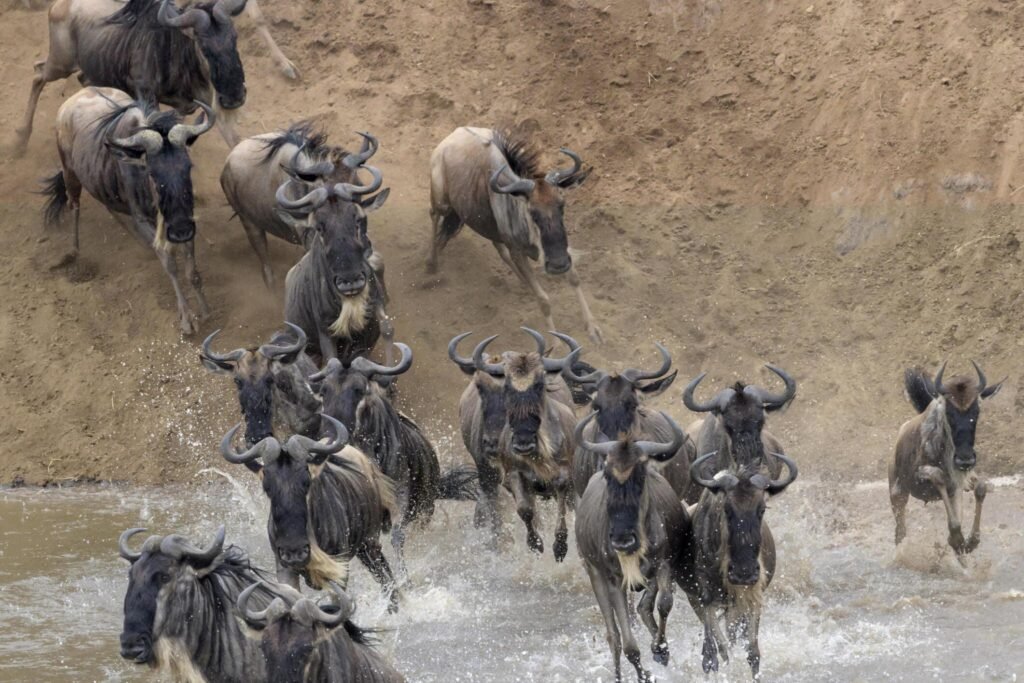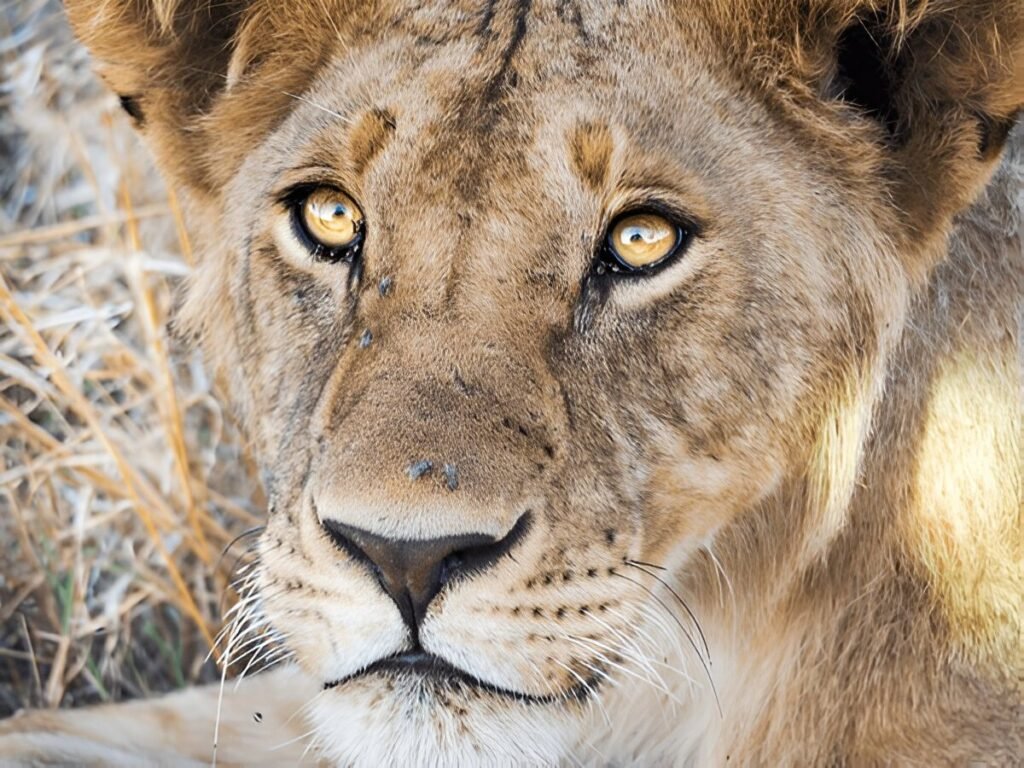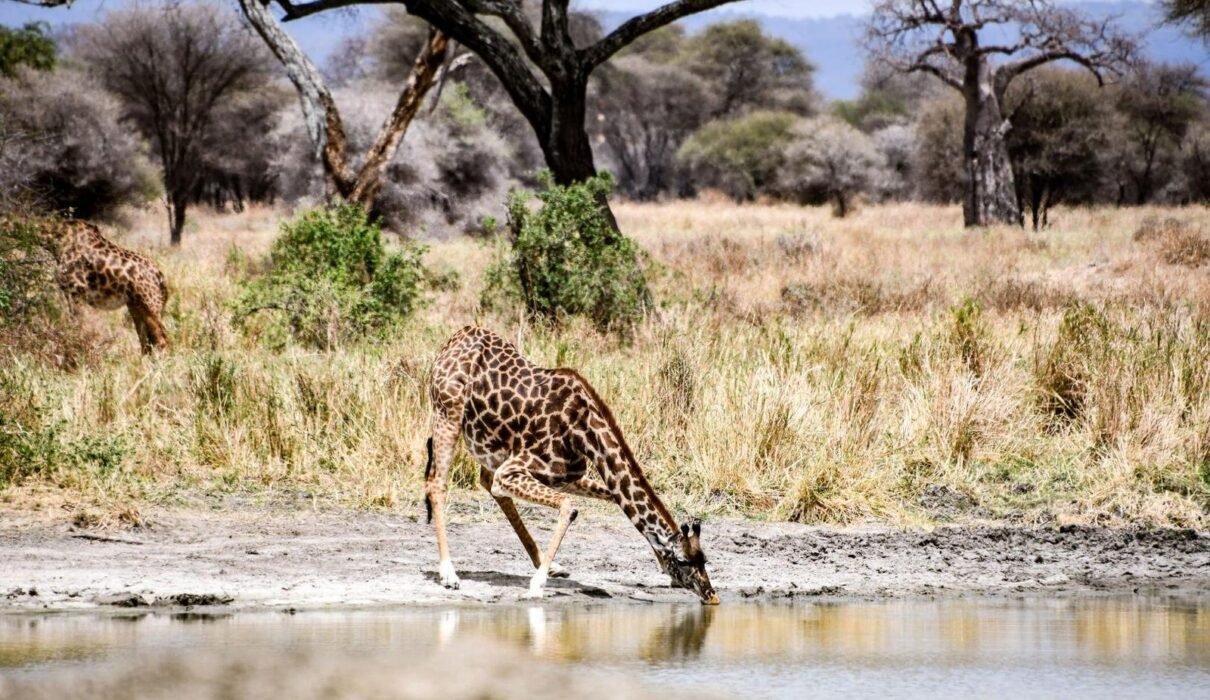Tanzania Travel Seasons Best Times, Planning an African safari is an exciting adventure, offering the chance to see breathtaking landscapes, diverse wildlife, and local cultures. But with so many options available, choosing the right safari package can feel overwhelming. Whether you’re looking to witness the Great Migration in the Serengeti or trek through the untamed wilderness of Ruaha National Park, there’s a safari package that suits your interests and budget.
In this guide, we’ll highlight some of the best African safari tour packages, covering top destinations, tips on how to select the right one, and useful resources for a seamless experience.
1. The Great Migration Safari in Tanzania, Tanzania Travel Seasons Best Times
One of the most iconic wildlife events in Africa is the Great Migration, where over a million wildebeest, zebras, and gazelles move across the plains of Serengeti National Park in Tanzania and the Maasai Mara in Kenya. Witnessing this natural spectacle, especially the river crossings, is a must for any wildlife enthusiast.

Best Time to Go, Tanzania Travel Seasons Best Times
The best time to visit the Serengeti for the Great Migration is between June and October, during the dry season when the animals gather around water sources and river crossings become more frequent. For customized migration tour packages, you can visit Eddy Tours & Safaris, which offers tailored itineraries based on the migration patterns. Learn more about the Great Migration.
2. Serengeti and Ngorongoro Crater Safari, Tanzania Travel Seasons Best Times
A combination of Serengeti National Park and the Ngorongoro Crater makes for a fantastic safari experience. The Serengeti is famous for its vast plains and abundant wildlife, while the Ngorongoro Crater is known as Africa’s “Garden of Eden,” home to one of the highest concentrations of large mammals in the world, including the Big Five (lion, leopard, elephant, buffalo, and rhino).
Why This Package is Popular, Tanzania Travel Seasons Best Times
- Ngorongoro Crater offers one of the best places in the world to see black rhinos.
- The Serengeti’s wide-open plains provide excellent photography opportunities, especially at sunrise and sunset.
For an in-depth look at these two iconic destinations, consider booking through Kilimanjaro Climb Specialist for expert-led safari tours. Discover more about the Ngorongoro Crater.
3. Selous Game Reserve: Off-the-Beaten-Path Safari, Tanzania Travel Seasons Best Times
For travelers looking to avoid the crowds, the Selous Game Reserve (now part of Nyerere National Park) offers an alternative to the more popular parks. This vast reserve in southern Tanzania is one of the largest protected areas in Africa and is famous for its untouched wilderness.
Highlights of a Selous Safari, Tanzania Travel Seasons Best Times
- Boat safaris along the Rufiji River, where you can see hippos and crocodiles up close.
- The reserve is home to large elephant herds, lions, and the endangered African wild dog.
Selous offers a more intimate experience with nature, and Eddy Tours & Safaris provides budget-friendly and luxury packages to this remote gem.
Learn more about Selous Game Reserve.
4. Budget Camping Safaris in Tanzania, Tanzania Travel Seasons Best Times
If you’re looking for a more affordable way to experience Africa’s wildlife, a camping safari is a fantastic option. Tanzania offers budget-friendly safaris that include guided game drives, comfortable camping, and meals. These packages allow you to see the same wildlife as luxury tours but at a fraction of the cost.
Why Choose a Camping Safari, Tanzania Travel Seasons Best Times
- You’ll get closer to nature by staying in tents inside or near the national parks.
- It’s a great way to experience Tanzania’s wilderness without the high price of luxury lodges.
To find budget safari options, Eddy Tours & Safaris provides a range of packages suited to different budgets, offering the same incredible wildlife experiences as higher-end tours.
Read more about camping safaris in Tanzania.
5. Mount Kilimanjaro and Safari Combo, Tanzania Travel Seasons Best Times

For the adventure-seeker, combining a Mount Kilimanjaro climb with a wildlife safari is a perfect package. After summiting the tallest mountain in Africa, head to one of Tanzania’s renowned national parks to relax and take in the wildlife.
Why This Combo Works, Tanzania Travel Seasons Best Times
- After the physical challenge of climbing Kilimanjaro, a safari offers a relaxing way to explore Tanzania’s natural beauty.
- Popular itineraries combine the Machame Route or Lemosho Route with a safari in Tarangire or Lake Manyara National Park.
For more information, check out Kilimanjaro Climb Specialist, which offers guided climbs and safari combinations.
Find out more about climbing Kilimanjaro.
6. Walking Safari in Ruaha National Park, Tanzania Travel Seasons Best Times
For those seeking a more immersive experience, a walking safari in Ruaha National Park offers the opportunity to explore the African wilderness on foot. Ruaha is Tanzania’s largest national park and is known for its rugged terrain and diverse wildlife, including large populations of elephants and lions.
What Makes Ruaha Unique, Tanzania Travel Seasons Best Times
- Walking safaris allow you to experience the African bush up close, guided by experts who will teach you about the local flora and fauna.
- The park is less frequented by tourists, providing a quiet, intimate experience.
For walking safaris and personalized tours, Eddy Tours & Safaris offers well-organized packages that highlight Ruaha’s best features.
Learn about walking safaris in Africa.
7. Zanzibar Beach and Safari Packages, Tanzania Travel Seasons Best Times
For a safari followed by some relaxation, a Zanzibar beach and safari package is an excellent choice. After a few days of game drives in the national parks, head to the tropical island of Zanzibar for beautiful beaches, clear waters, and rich Swahili culture.
Why Combine Zanzibar with a Safari, Tanzania Travel Seasons Best Times
- A perfect way to unwind after a thrilling safari, with pristine beaches and vibrant coral reefs for snorkeling and diving.
- You can visit Stone Town, a UNESCO World Heritage Site, to learn about the island’s history and culture.
Eddy Tours & Safaris offers safari and Zanzibar packages that provide the best of both worlds—wildlife and beach relaxation.
Learn more about Zanzibar’s beaches and culture.
8. Gorilla Trekking and Safari in Uganda or Rwanda, Tanzania Travel Seasons Best Times
For an entirely different kind of wildlife experience, a gorilla trekking safari in Uganda or Rwanda is one of the most unique opportunities Africa has to offer. Trekking through the Bwindi Impenetrable Forest or Volcanoes National Park brings you face-to-face with mountain gorillas in their natural habitat.
Why Gorilla Trekking is Special, Tanzania Travel Seasons Best Times
- You’ll hike through dense forests with guides who track the gorillas, ensuring an intimate viewing experience with these incredible primates.
- Gorilla permits can be expensive, but the experience is truly one-of-a-kind.
Learn more about gorilla trekking.
Conclusion: How to Choose the Best Safari Package for You
Whether you’re drawn to Tanzania’s Great Migration, Kilimanjaro, or a relaxing beach holiday in Zanzibar, Africa offers a wide range of safari packages to suit every traveler. Planning a safari requires thoughtful consideration of your budget, interests, and the type of experience you want. From luxury lodges to budget camping, the right package is out there for everyone.
To make your trip truly special, explore options with Kilimanjaro Climb Specialist and Eddy Tours & Safaris. They offer personalized tour packages that cover everything from mountain climbs to game drives, ensuring you have a seamless and enjoyable safari experience.

